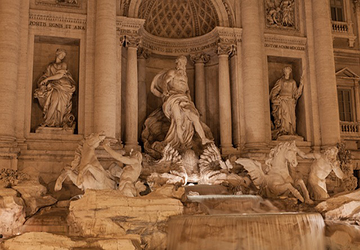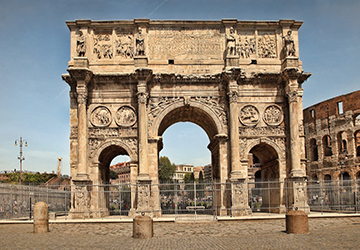Italy vacations are only complete with a trip to Rome, the capital, which has been dubbed the Eternal City for more than two thousand years. A city with a wealth of historical, artistic, and cultural treasures, it is well worth seeing. A trip to Rome wouldn't be complete without a few historical excursions. But how does one even find a starting point?
This article details as we will talk about the best parts of classical Rome along with its undiscovered historical treasures.

1.The Colosseum
Unquestionably, one of the most well-known sights in Rome, if not the entire world, is the Colosseum. Built-in 80 A.D., this enormous theater had a capacity of 50,000 people. In today's world, the Colosseum is a well-liked tourist destination that provides visitors with a look into the short history of ancient Rome.
As you move around the arena, you can almost hear the spectators' yells and cheers as the gladiators engage in combat. You can also explore the underground tunnels and chambers where animals and gladiators were housed before the games.
2.The Roman Forum
For those interested in the city's history, the Roman Forum is another must-see destination. It served as the political and social hub of ancient Rome, and Romans convened in the forum to talk about important issues like politics, trade, and other topics. As you stroll through the platform, you can explore the remains of temples, basilicas, and other buildings that formerly served as the hub of Roman society. Additionally, you can still make out the ruins of the Curia, where the Roman Senate convened, and the Rostra, where public speeches were delivered.
3.The Pantheon
The Pantheon, a well-liked tourist destination today, provides tourists with a glimpse of the architectural and engineering skill of ancient Rome. You can wander the temple and admire the elaborate carvings on the columns, arches, and other building elements. You can also look up at the dome and ponder how the Romans of long ago constructed such a vast and striking element without the aid of contemporary technology.
4.The Vatican
Just look at this monument and wonder how the ancient Romans, who lived before technology, could erect such a huge landmark. It contains a cultural and historical trove that is interesting to explore. Some of the most renowned works of art in the entire world can be found in the Vatican Museums, including the Sistine Chapel, where Michelangelo painted some of his most well-known frescoes.
In addition, several of the world's oldest and most priceless books and manuscripts can also be found in the Vatican Library. It's one of the many museums you can visit if you are interested in history.

5.Palatine Hill
One of Rome's seven hills, the Palatine Hill (Palatino), lies near the Colosseum and the Roman Forum. A she-wolf is said to have raised the twins Romulus and Remus here in a cave. Romulus murdered Remus on Palatine Hill during a violent argument between the two and then established Rome here in 753 BC.
Rome became more powerful and prosperous as time went on. The Palatine developed into a chic residential area and was the most sought-after address for the elite of Ancient Rome. The loveliest and most calming Palatine Hill is now a vast, empty archaeological garden. Some of the top sights to see on Palatine Hill include the Domus Flavia and the Farnese Gardens.
6.Arch of Constantine
The magnificent Arch of Constantine (Arco di Costantino), which stands between the Roman Forum and the Colosseum, is the final significant structure of Imperial Rome. It stands out for its intricate medallions, reliefs, and statues, many of which were stolen from different earlier-period buildings.
The Arch of Constantine represents a vital point turning in the history of the Roman Empire and, by extension, of the entire world. Following a vision while fighting, he became a Christian, and the centuries-long persecution of Christians, which saw many of their early adherents brutally executed, ended under Emperor Constantine's reign.
7.Tranjan's Column
In A.D 113, the head worked on the beautiful Trajan's Segment, which celebrates his two victories over the Dacians; they are the people who remain in Rome today. St. is depicted in the statue atop the tasteful marble column.
Pope Sixtus ordered the statue of Peter in 1587 to replace the earlier Trajan statue. In a room at the underpinning of the portion, Trajan's remaining parts were kept in a splendid urn when he kicked the bucket in A.D 117, but they are no longer there. From Via dei Fori Imperiali, visitors can freely view Trajan's Column 365 days a year.
8.Circus Maximus
One of the classic monuments in Rome that you shouldn't miss is the Circus Maximus (Circo Massimo). A valley separates the Palatine and Aventine hills. At the beginning of the sixth century B.C., Lucius Tarquinius Priscus, Rome's first Etruscan king, ordered the construction of Circus Maximus.
An opulent luxury box was built atop Palatine Hill to accommodate the emperor's viewing pleasure. The Circus Maximus would rival the Colosseum in beauty if still standing.
Any trip to Italy must include visiting Rome, the capital, better known as the "Eternal City" for over two thousand years. Public transportation makes it easy to get to the best ancient Rome sites. On your Rome tour, explore the best historical places we have listed above in this article.